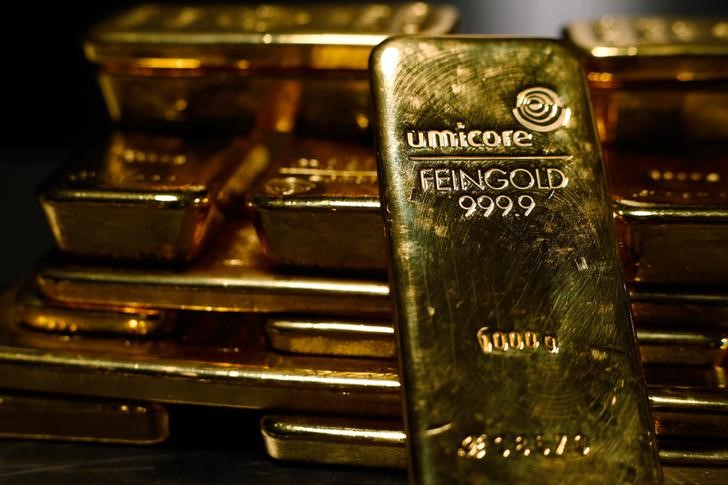Investing.com - Gold prices fell to the lowest levels of the session on Thursday, after data showed that retail sales in the U.S. rose more than expected in July, boosting optimism over the strength of the economy and supporting the case for higher interest rates.
Gold futures for December delivery on the Comex division of the New York Mercantile Exchange shed $9.40, or 0.84%, to trade at $1,114.20 a troy ounce during U.S. morning hours after hitting a session high of $1,126.30, the most since July 20.
The U.S. Commerce Department said retail sales increased by 0.6% last month, beating expectations for a gain of 0.5%. Retail sales for June were revised up to a flat reading from a previously reported decline of 0.3%.
Rising retail sales over time correlate with stronger economic growth, while weaker sales signal a declining economy.
Core retail sales, which exclude automobile sales, rose 0.4% in July, matching forecasts. Core sales in June increased 0.4%, whose figure was revised from a previously reported decline of 0.1%.
Core sales correspond most closely with the consumer spending component of the government's gross domestic product report. Consumer spending accounts for as much as 70% of U.S. economic growth.
At the same time, the U.S. Department of Labor said the number of individuals filing for initial jobless benefits rose by 5,000 last week to 274,000 from the previous week’s total of 269,000. Analysts had expected initial jobless claims to rise by 1,000 to 270,000 last week.
First-time jobless claims have held below the 300,000-level for 23 consecutive weeks, which is usually associated with a firming labor market.
The upbeat data bolstered the case for a U.S. rate hike this fall. The U.S. dollar index, which measures the greenback’s strength against a trade-weighted basket of six major currencies, was up 0.5% at 96.76, off Wednesday's one-month lows of 95.94.
A day earlier, gold rallied $15.90, or 1.44%, to end at $1,123.60, the fifth straight daily gain, as China's surprise move to devalue its currency fanned hopes that the Federal Reserve could delay raising interest rates until the very end of 2015.
The People's Bank of China reassured markets that it will not continuously devalue the yuan, easing concerns over a full blown currency war that could destabilize the global economy.
The central bank said in a closely-watched press conference earlier Thursday that there was no basis for further depreciation in the yuan, given China's strong economic fundamentals.
China allowed the yuan to fall sharply this week to hit the lowest level since October 2012. The steep decline stoked concerns that China may allow the yuan to continue to depreciate, fueling fears over a currency war, as Beijing aims to make the nation's ailing exports more competitive on the global stage.
Some traders believe that the Fed could postpone raising interest rates as soon as September in response to China’s currency devaluation move, as officials are likely to remain concerned over global growth and inflation pressures.
Gold fell to a five-and-a-half year low of $1,072.30 on July 24 amid speculation the Fed will raise interest rates in September for the first time since 2006. But prices have since rebounded approximately 4.5% on hopes of a delayed U.S. rate hike.
Also on the Comex, silver futures for September delivery slumped 14.1 cents, or 0.91%, to trade at $15.33 a troy ounce.
Elsewhere in metals trading, copper for September delivery on the Comex division of the New York Mercantile Exchange inched down 0.1 cents, or 0.03%, to trade at $2.349 a pound during morning hours in New York.
Copper slumped to a six-year low of $2.292 on Wednesday as growing concerns over the health of China's economy drove down prices.
Data released Wednesday showed that China's industrial production increased at an annual rate of 6.0% in July, disappointing expectations for a 6.6% gain.
Figures released over the weekend showed that Chinese exports dropped 8.3% in July, their biggest fall in four months, while producer prices fell to a six-year low.
The Asian nation is the world’s largest copper consumer, accounting for almost 40% of world consumption last year.
